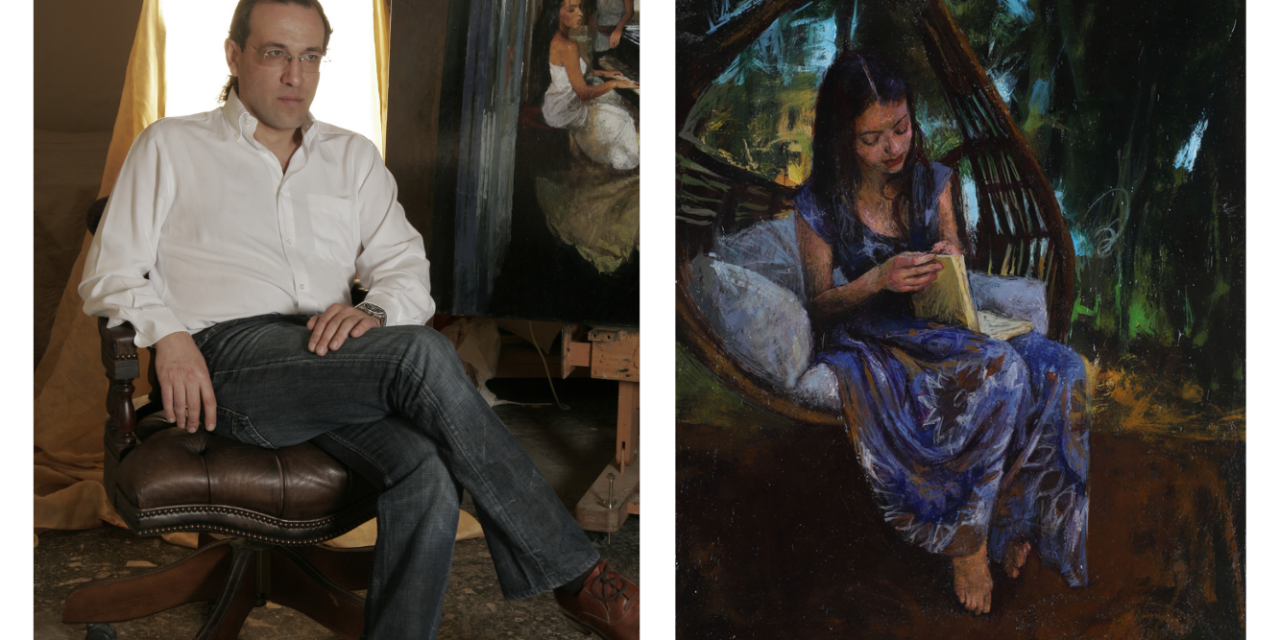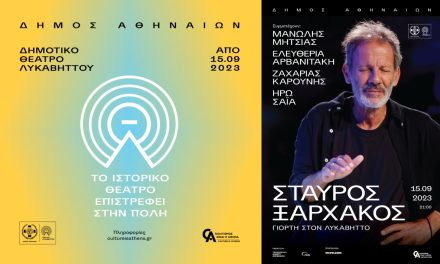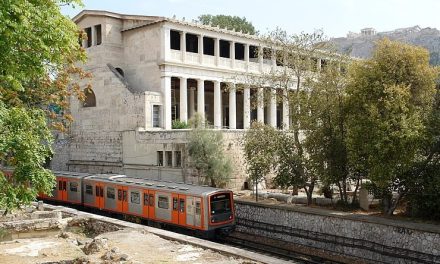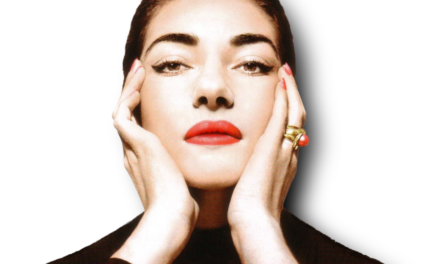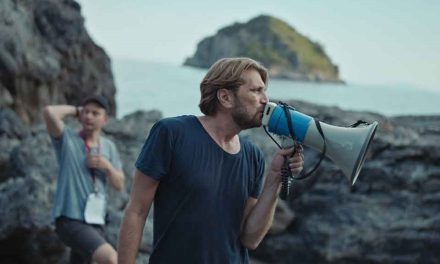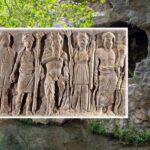Painter Raphael Baikas presents a series of new paintings at his seventh solo exhibition, Companions in Memory, at Argo Gallery, inviting viewers to embark on his artistic journey, a fusion of personal narratives, methods, and messages.
Drawing inspiration from eternal values and female beauty, he creates compositions that reflect charm, romanticism and tenderness. His canvas is evocative of times gone by, as if our gaze is shifted to the past, a carefree childhood or a spontaneous youth. His nostalgic paintings seem to be coming from the past while celebrating the beauty of the present. In his artistic vision, the mystery and lyricism of the past effortlessly meets the present.
Raphael Baikas was born in Athens in 1966. He initially studied Graphic Design and Decoration and later on pursued his studies at the Athens School of Fine Arts, graduating with honors in 1989. He attended Panayotis Tetsis painting (1985-1989) workshop as well as nude and ceramic classes.
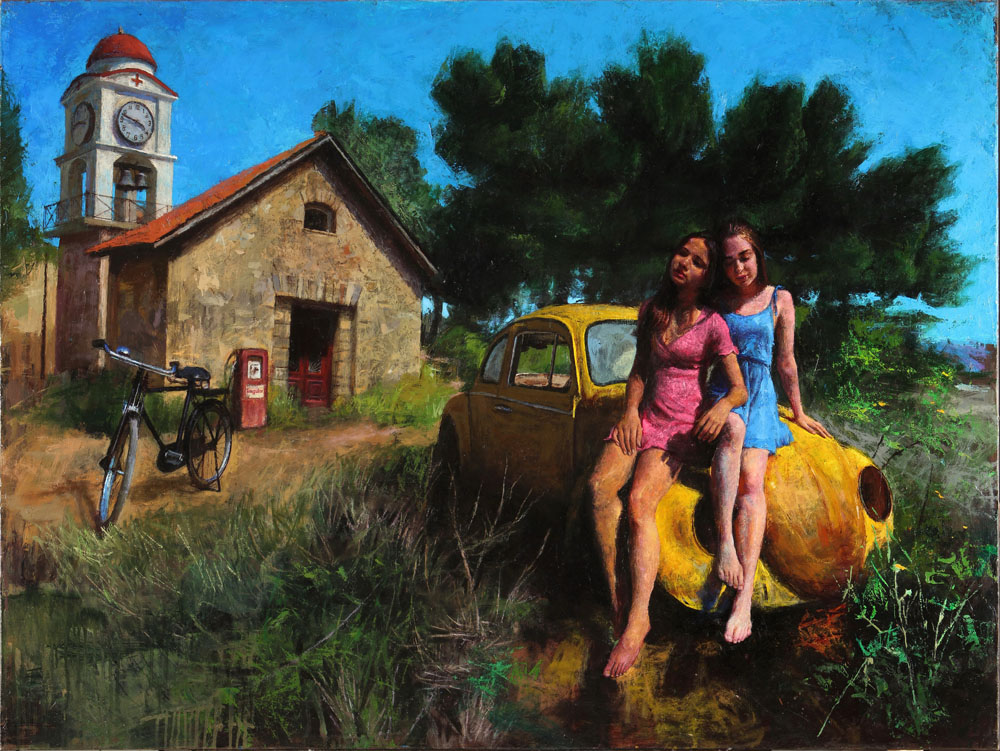
Rafael Baikas talked to Greek News Agenda* about the artistic values and inner thoughts that shape his subject matter.
Your art is defined by elegance, nostalgia and innocence, exemplifying the female beauty. Was this a conscious choice?
As far as I am concerned, at this point, the woman is a symbol in my art. She is the nostalgic puzzle piece of a memory that defined our childhood. I do not describe her; I do not wish to embellish her. The female form was for me an object of study right from the start. It continued to be after I graduated from the Athens Higher School of Fine Arts and later on crystallized as the center of my intellectual sphere.
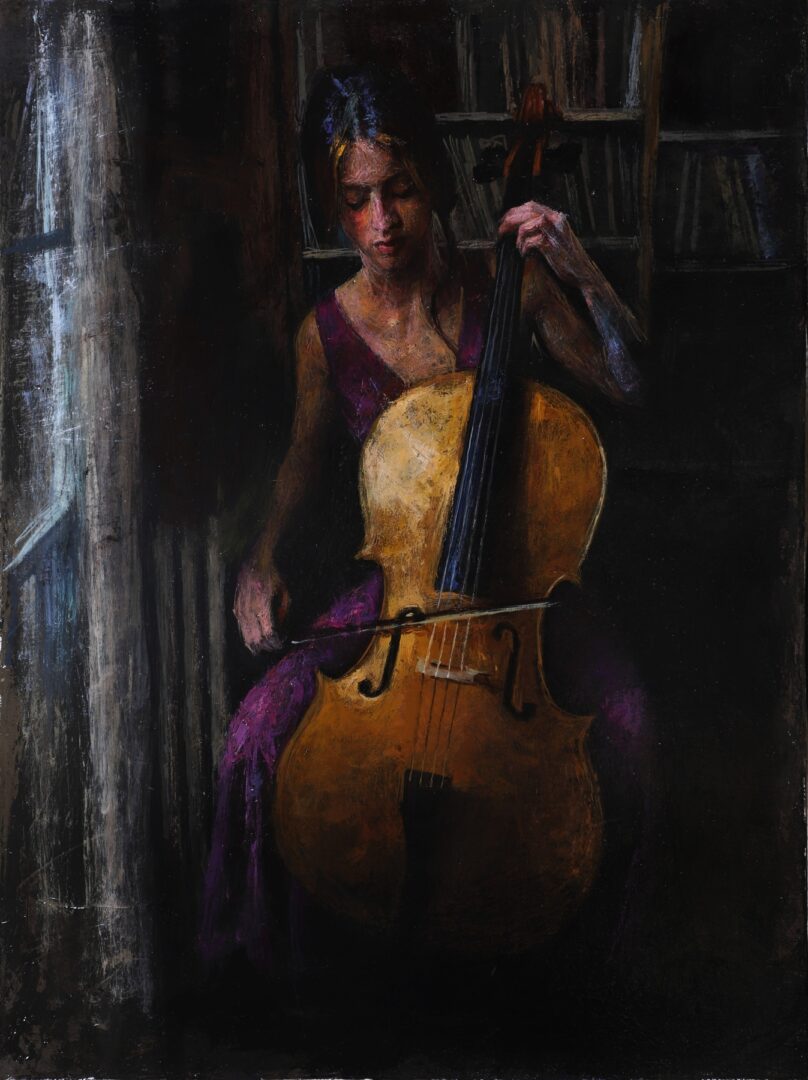
How compatible is the sensuality and lyricism of your painting with the contemporary world?
The sensuality and lyricism of the female figure reflected in my paintings are not compatible with the modern world. As I mentioned before, the female figure, being the center of memory, is nostalgic and seeks values. The modern world does not embrace these values anymore, simply because it is “modern”.
This is a huge and optimistic challenge for me. A clear horizon in an age of spiritual sterility with storms of internet influences that define us daily. You know, after countless conversations with the visual arts community, you realize how much we are covered by a “veil”, an invisible “modern” membrane that seeks to define everything. So that is where the optimism of the artist comes in when he notices the acceptance of the public, who craves the sweetness of the past like a thirsty man craves water.
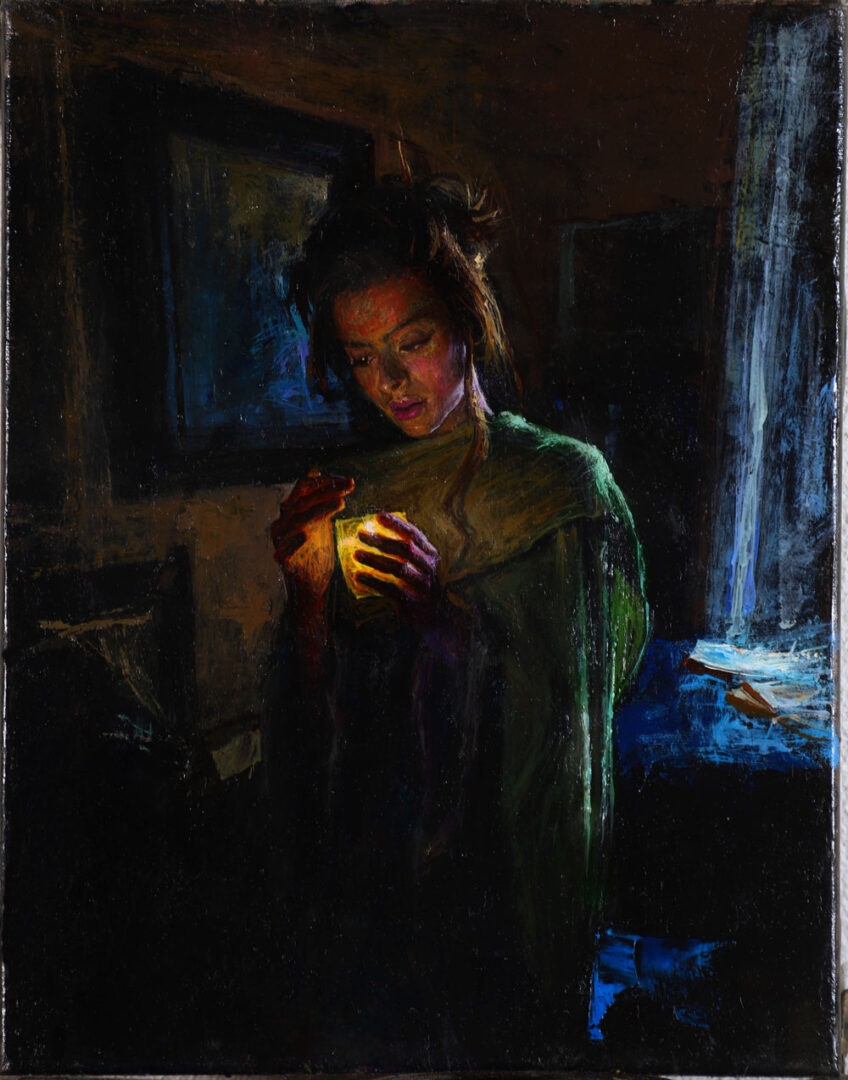
What role does the concept of time play in your work?
Life was much simpler in the past. Things would move much slower. The sense of time used to have a different effect on all aspects of life. I am not saying that everything was carefree and innocent back then. It’s just that now, we have to constantly struggle with complexity, neurosis, and depression. Each time with its challenges after all.
Time is the Fourth Dimension. The most precious commodity. Without any exception, we have to buy to correct mistakes, catch up with our ambitions, overcome grief, and deal with everyday life. And, of course, to gain more “time”… The painter always creates by looking back. And this cannot be done without back and forths. For me, it is wrong to say that an artist must belong to his time. In that case, he wouldn’t be a painter. An artist creates in the present, always looking back.
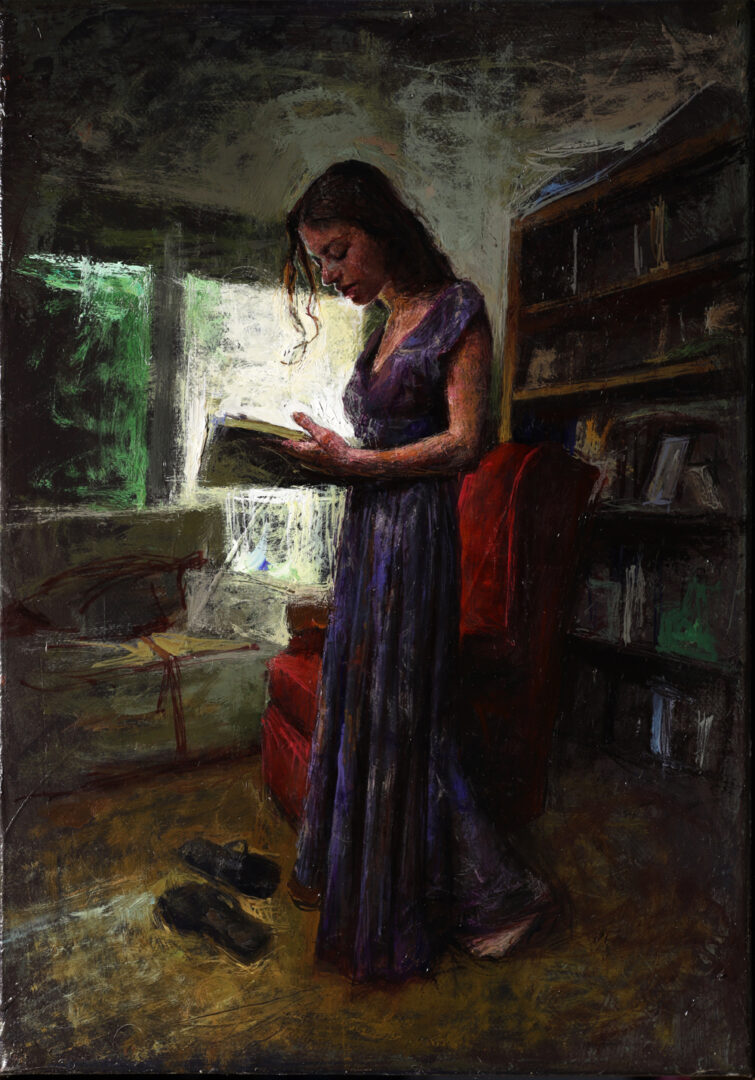
Your paintings, seem to be narrating a story. Could you tell us more about it?
It is the story of my life, my life choices. Models and spaces allude to the passage of our lives and define our place in “space-time”. Female, and at times male figures, are both protagonists and devotees of a past that is always present. Let us not forget that modern art would not exist without its origins from the past. We cannot decode the present if we do not look back… And this is the case not only in art… Actually, it’s a story I tell by successively retrieving faded frames of my childhood. I process them, I give them a new perspective, and at the same time of focus on the happy moments of the present. I reconstruct them and create a narrative taking place here and now.
*Interview by Dora Trogadi (Intro image: Taking Notes II)
TAGS: ARTS

